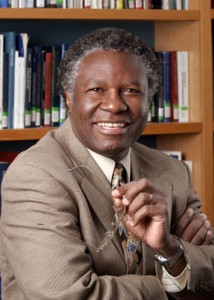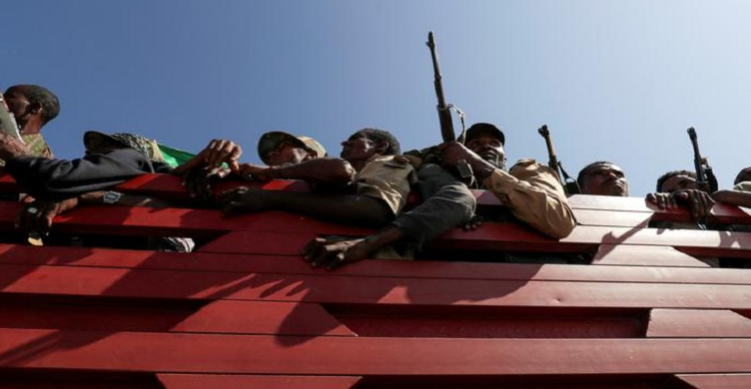This is a guest post by Harvard professor Calestous Juma
In one of Africa’s most ambitious investment decisions, South Africa’s President Jacob Zuma has unveiled a plan to spend $97 billion on infrastructure over the next three years to upgrade roads, ports, and transportation networks aimed at accessing coal and other minerals.
President Zuma’s proposals were immediately supported by the powerful Congress of South African Trade Unions, whose Secretary-General Calestous Juma, said it “pressed all the right buttons.”
But some international rating agencies are skeptical of the ambitious plan. Global Credit Rating, which rates 1,000 organizations and debt issuers in over 30 countries, has warned that the projects are likely to be hampered by Moody’s and Standard & Poor’s recent downgrading of the country’s sovereign rating. Global Credit Rating is concerned about a lack of “certainty on the financial feasibility of these initiatives” due to “diminished capacity” to manage political and economic challenges.
The challenge for South Africa is not to make decisions based on what might appear to be diminished capacity to manage infrastructure projects. To the contrary, these investments are an opportunity for South Africa to leverage infrastructure as the foundation for economic and technological renewal.
South Africa’s bold move to focus on infrastructure is not just a matter of assessing the rate of return on specific investments. It is about building the core foundations for economic growth. Ratings approaches that assume the existence of basic infrastructure often fail to appreciate the gravity of Africa’s infrastructure challenges.
Take agriculture as an example. Africa continues to suffer from low levels of agricultural productivity and is constantly bedeviled by famines. A large part of the continent’s inability to feed itself and stimulate rural entrepreneurship can be explained by poor infrastructure (transportation, energy, irrigation, and telecommunication).
Poor road networks illustrate this point. African farmers without adequate road networks are condemned to grow not what they can eat, but what they can carry on their heads and eat quickly before pests destroy it. As a result, nearly half of the hungry people in Africa are farmers.
The majority of Africa’s rural populations do not live within reach of all-season roads. As a result they are not capable of participating in any meaningful entrepreneurial activities. On average, in middle-income countries about 60% of rural people live within two kilometers of an all-season road.
In Kenya, for example, only about 32% of the rural people live within two kilometers of an all-weather road. The figure is 31% for Angola, 26% for Malawi, 24% for Tanzania, 18% for Mali and a mere 10.5% for Ethiopia. Expanding rural road networks (in addition to investing in electrification and irrigation) is a strategic investment for rural development and should not be judged against narrowly defined economic criteria.
According to the World Bank, the continent’s infrastructure deficit is considered one of the most significant barriers to sustaining Africa’s growth. It is estimated that the continent will need to invest nearly $93 billion per year over the next decade to bridge the deficit. Some estimates put the budget for Nigeria alone at $15 billion per year.South Africa’s plan is part of a long-term infrastructure strategy to be implemented over the next 15 years at the cost of $462 billion.
A wide range of creative ideas are emerging to address the financial gap. The African Development Bank (AfDB) has proposed to issue a $40 billion bond to support infrastructure development in Africa. AfBD President Dr. Donald Kaberuka has pointed out that African governments have $450 billion in foreign reserves earning low or zero interest. Investing just 5% of the money would generate $22 billion for the infrastructure bond that would be guaranteed by AfDB.
In addition to undergirding economic growth and generating employment, such investments also stimulate the development of engineering capabilities, which in turn foster entrepreneurship.Such investments provide opportunities for African countries to work with international partners to build the engineering and managerial capabilities needed to design, build, and maintain infrastructure projects.
Furthermore, this is also an opportunity for the private sector to work closely with government to design new engineering courses, programs, and colleges that are aligned with needs of the projects.
African countries are already coming up with creative responses to shortages of engineers. Uganda, for example, has revived a defunct college and converted it into Uganda University of Military Science and Technology. The university, administered by the Uganda People’s Defence Force, has already started graduating railway engineers.
This approach shows the potential of creating engineering universities within line ministries to support infrastructure development. Such creative solutions are emerging at a time when more African countries are electing to high offices leaders with technical training. (For details on the rising African technocracy, see this post.)
South Africa is providing vital leadership for other African countries by recognizing the critical role that infrastructure plays in economic development. Economic models that fail to accommodate this reality are likely to meet their Waterloo in Africa.
Calestous Juma is Professor of the Practice of International Development at Harvard Kennedy School and co-chairs the African Union’s High Level Panel on Science, Technology and Innovation (Twitter @calestous)




